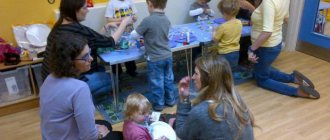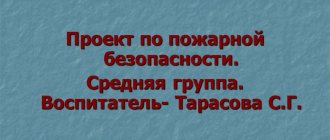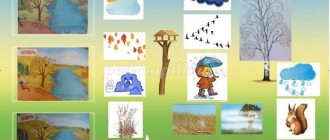Requirements for the design of a corner according to the Federal State Educational Standard
Requirements are made for corners in accordance with their theme, however, general provisions are highlighted for all children's activity centers in kindergarten:
- meeting the interests of children;
- filling the material base taking into account the age characteristics of pupils;
- aesthetics, attractiveness and comfort - to create a good mood;
- convenience and accessibility of corner materials for every child;
- optimal location in the group room (relative to the light source, other thematic corners);
- taking into account the regional component when designing a corner (for acquaintance and study of national life, art, crafts and crafts, language, literature).
Corners should be attractive and accessible to children and have an optimal location relative to each other and the light source
Passport for a corner in kindergarten
For each corner, a group passport is filled out and stored in a protective pocket directly in the activity center or in the teacher’s document folder.
The passport describes the data and the following characteristics of the corner:
- name of the corner;
- group number, age of children;
- goals and objectives of the corner;
- pieces of furniture, their quantity;
- materials and tools, their quantity;
- visual materials (wall posters, maps, diagrams);
- card index of games, exercises, experiments (possible in the corner).
The corner’s passport contains information about material equipment and examples of activities
The relevance of logical and mathematical zones in preschool institutions
The rapid development of science and high technology these days requires educational institutions to take a new approach to teaching the younger generation. They should not only equip children with knowledge and skills, but also develop life competencies, without which it is impossible to become successful and in demand in the modern world:
This work begins in preschool educational institutions (DOU). Modern exemplary educational programs proclaim one of the most important tasks of a preschool institution is the formation of a comprehensively developed, creative individual striving for active knowledge of the world around him. An important component of the comprehensive development of a child is logical and mathematical. And, in turn, zones of logical and mathematical development (mathematical corners) are a necessary part of the general developmental environment in a preschool educational institution.
Selection of interesting material
Interesting mathematical material is not so easy to find, but with basic guidelines, you can cope with any task. This is especially true for young teachers who come to work in kindergarten for the first time. In order to avoid mistakes, they should seek help from older, experienced colleagues, study the design of their mathematical corners, and on what basis they should perform their own. First of all, it is necessary to take into account the age of the pupils and the characteristics of this period in the children’s lives. By combining this knowledge, the teacher will be able to choose the right methodology and develop his own unique mathematical corner.
Love math
In a preschool educational institution, it is very important for the teacher to do everything possible to instill in children an interest in mathematics. Then they won’t have problems with this science in the future
In addition, well-prepared children, with developed abstract-logical thinking, will be more successful in school, not only in mathematics lessons, but also in other classes. Mathematics develops the ability to think, and this is the main skill that is useful in all areas.




